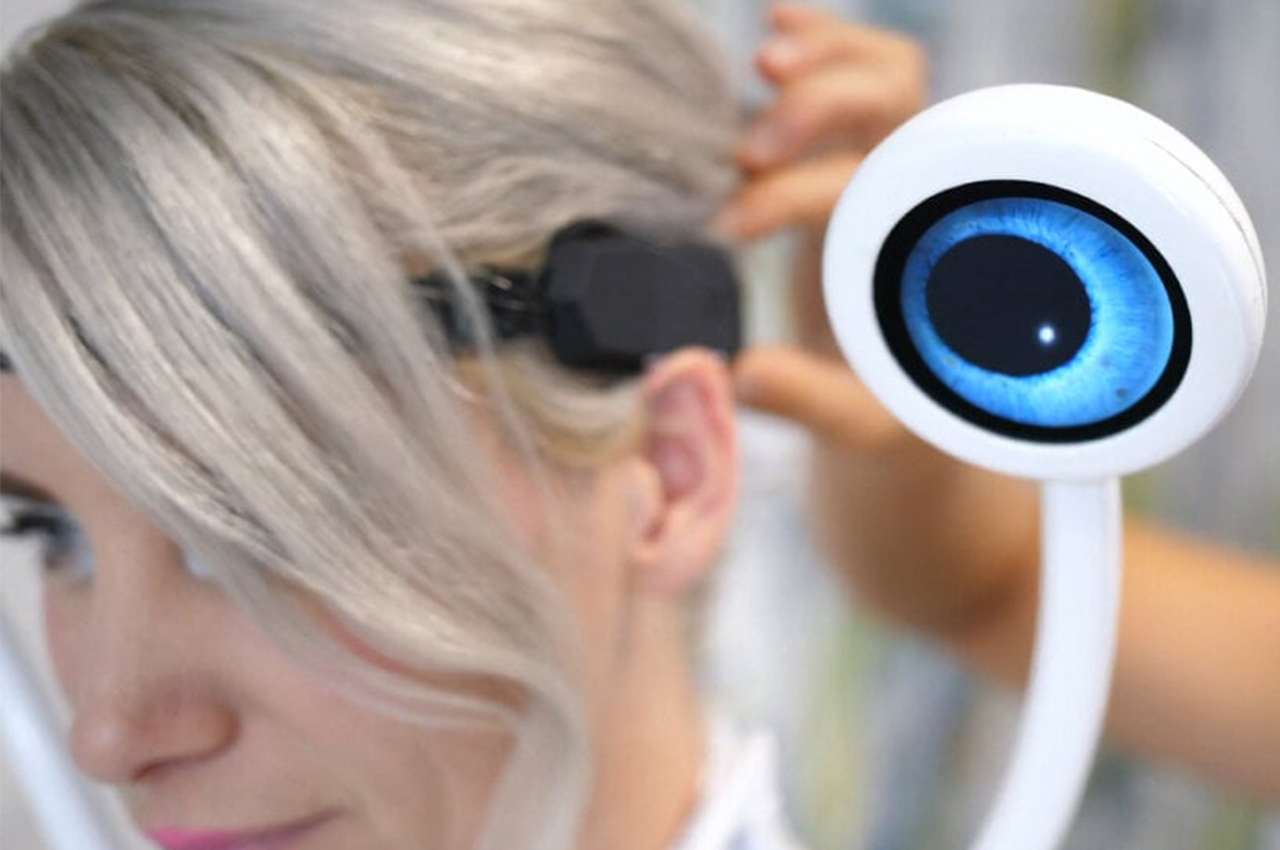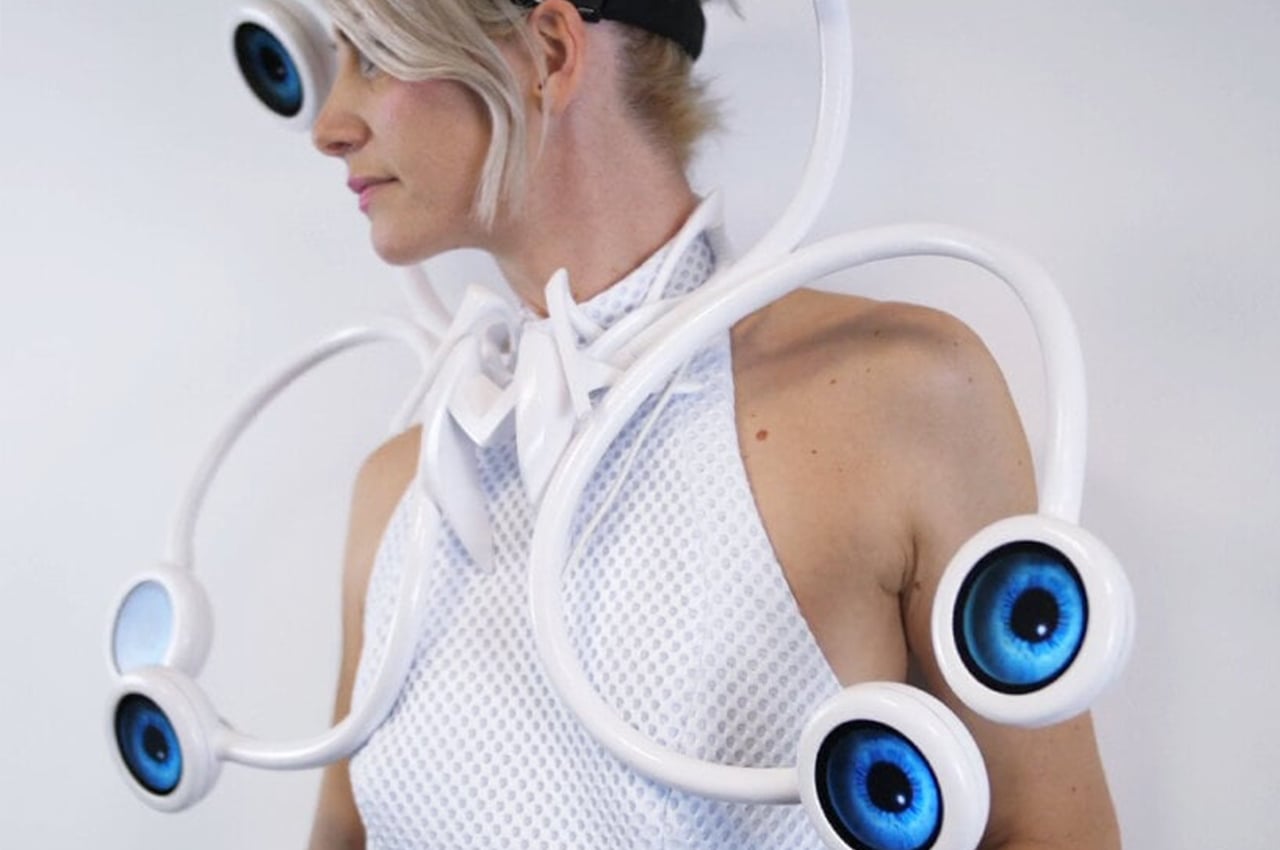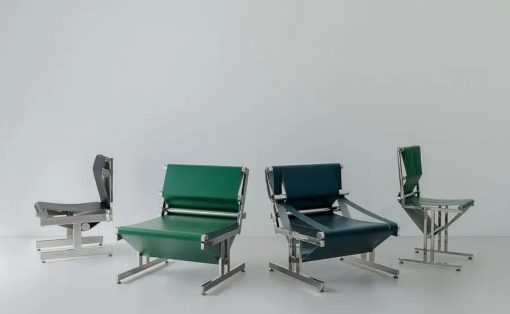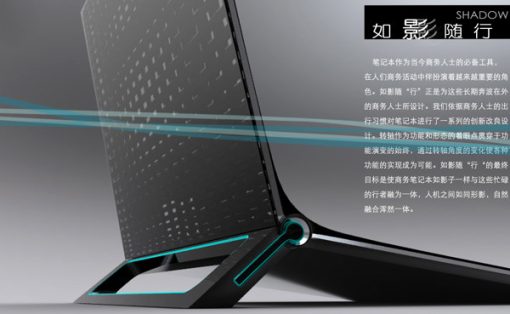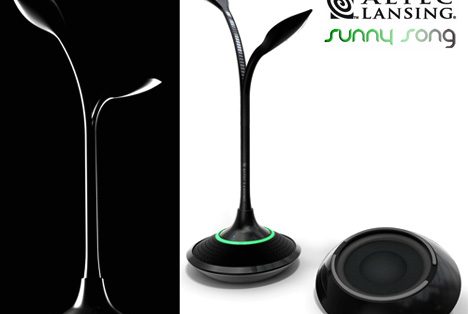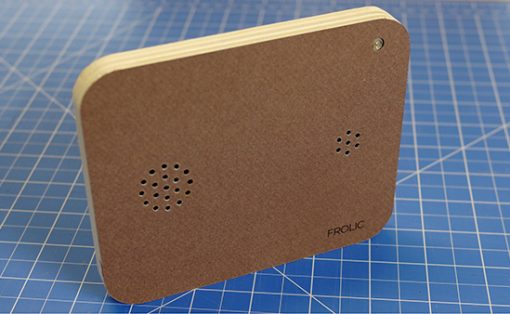Fashion has always been a powerful means of self-expression, allowing us to convey our moods, emotions, and individuality to the world. But what if fashion could go beyond mere aesthetics and help us communicate the complex state of our minds? Anouk Wipprecht, a visionary Dutch designer, has embarked on an intriguing journey to merge fashion and technology, resulting in an innovative creation known as the ScreenDress. This avant-garde white dress adorned with peculiar “eyeballs” promises to revolutionize how we express and perceive our cognitive load throughout the day.
Designer: Anouk Wipprecht
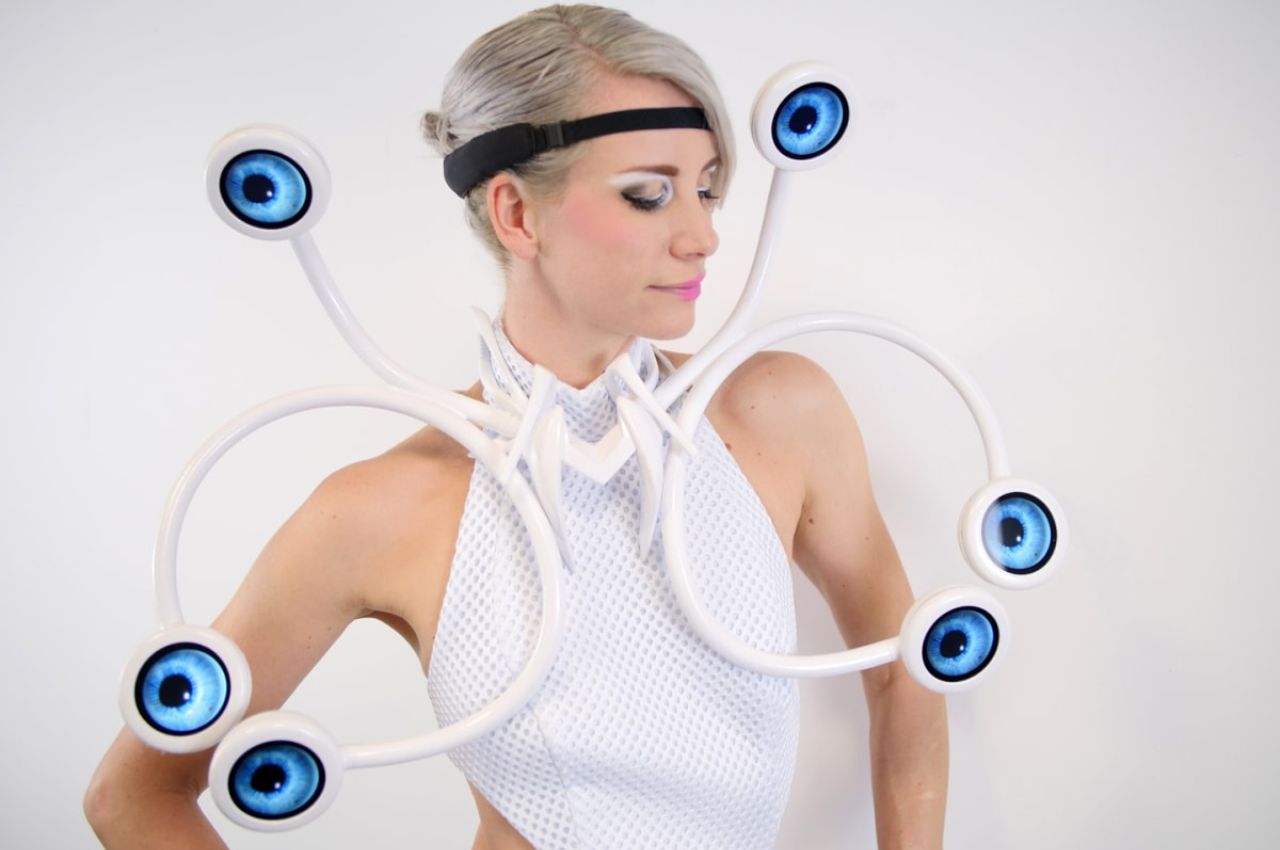
The concept of “cognitive load” refers to the mental effort required for processing information and managing tasks at any given moment. In our modern lives, we are bombarded with a ceaseless stream of distractions, from smartphone notifications to background chatter, creating a constant mental juggling act. This overload of information often leads to stress, fatigue, and frustration, and yet, many of us remain blissfully unaware of our cognitive loads.
Wipprecht recognized this prevalent issue and saw an opportunity for fashion to provide a solution. As she puts it, “Fashion can help the wearer communicate with other people about what is going on inside their own bodies.” The ScreenDress is her groundbreaking attempt to make this idea a reality.
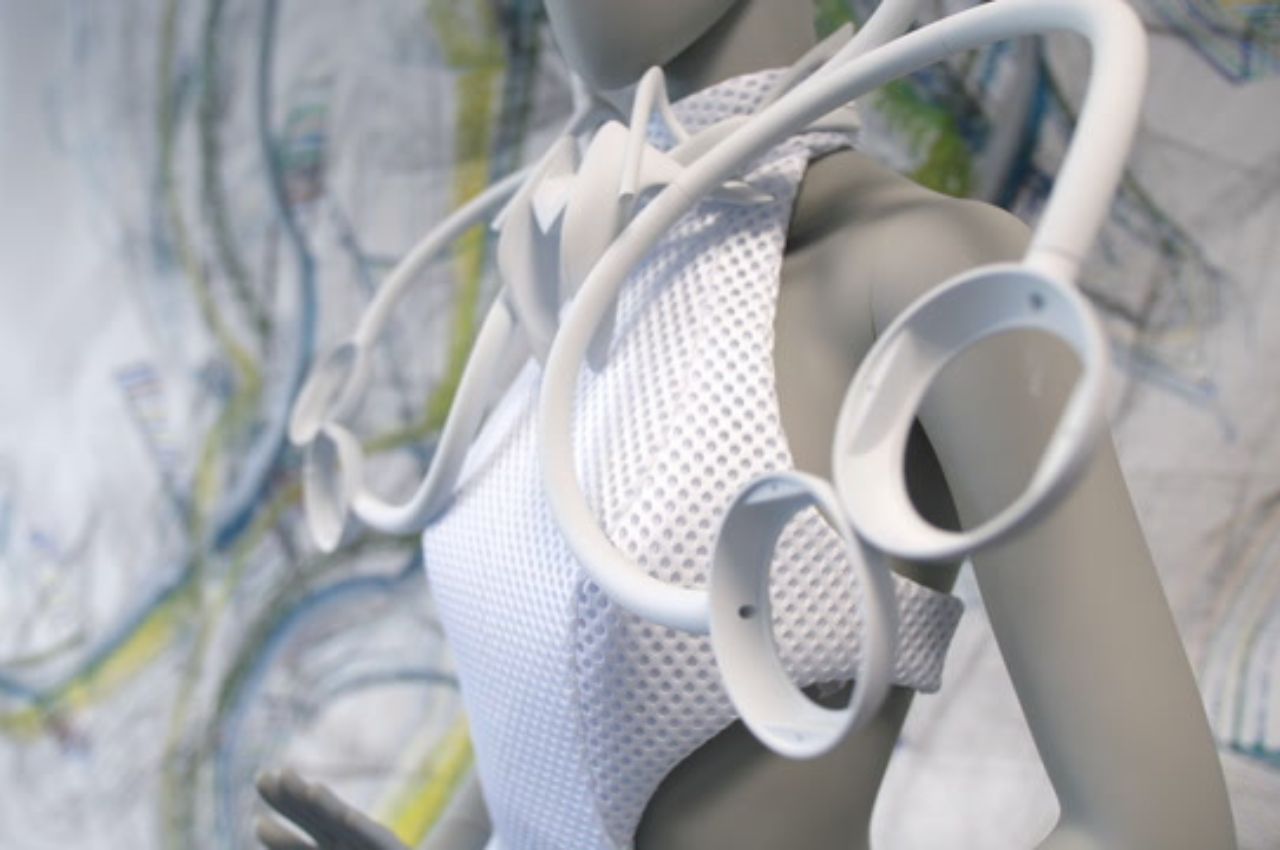
The ScreenDress is not your average piece of clothing. It features a striking neckpiece adorned with six round displays that resemble eyes, complete with an iris and a pupil. This neckpiece is intricately connected to a headband worn by the user, which, astonishingly, tracks brain waves. Developed by technology firm G.Tec, this headband uses brainwave data to estimate the wearer’s cognitive load, and this information is then visually conveyed on the displays.
The innovation lies in how the dress visually represents cognitive load. As the wearer’s mental burden increases, the pupils in the eye-like displays dilate wider and wider. Conversely, when cognitive load lessens, the pupils constrict. This visual metaphor is not only creative but also incredibly intuitive. Humans instinctively look at one another’s eyes to gauge their emotions, making this choice of representation particularly effective.4
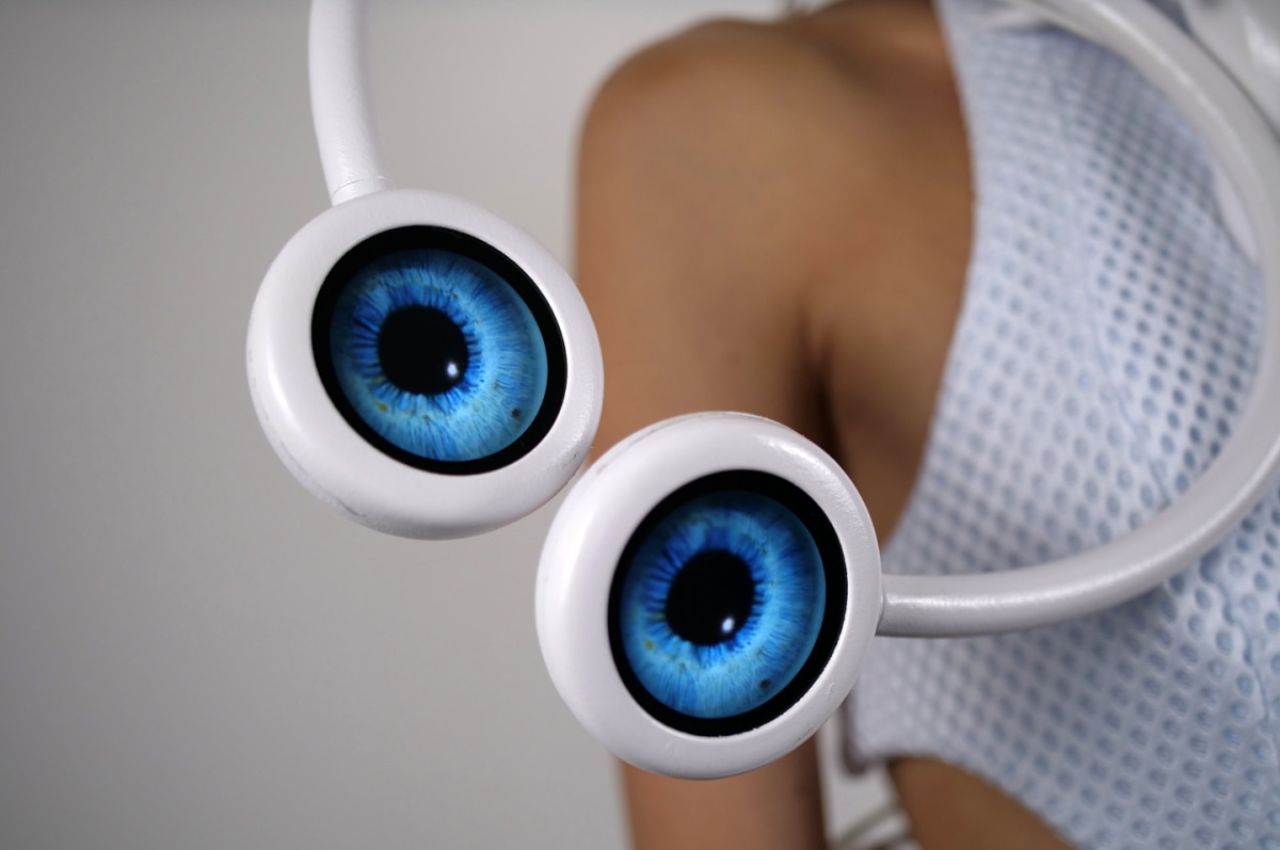
Wipprecht’s ambition didn’t stop at creating a fashion statement; she employed cutting-edge technology in the dress’s construction as well. Collaborating with HP, the gown was 3D printed using a specialized form of nylon. This material, while lightweight, possesses the strength necessary to support the embedded electronic components, ensuring that the dress is not just visually impressive but also functional.
As of now, the ScreenDress remains a conceptual creation and a form of performance art. However, Wipprecht’s vision extends beyond the realm of avant-garde fashion. She envisions a world where fashion can play a role in helping us navigate the stresses of everyday life. If our garments could reflect our cognitive load to those around us, it might foster better understanding and empathy.
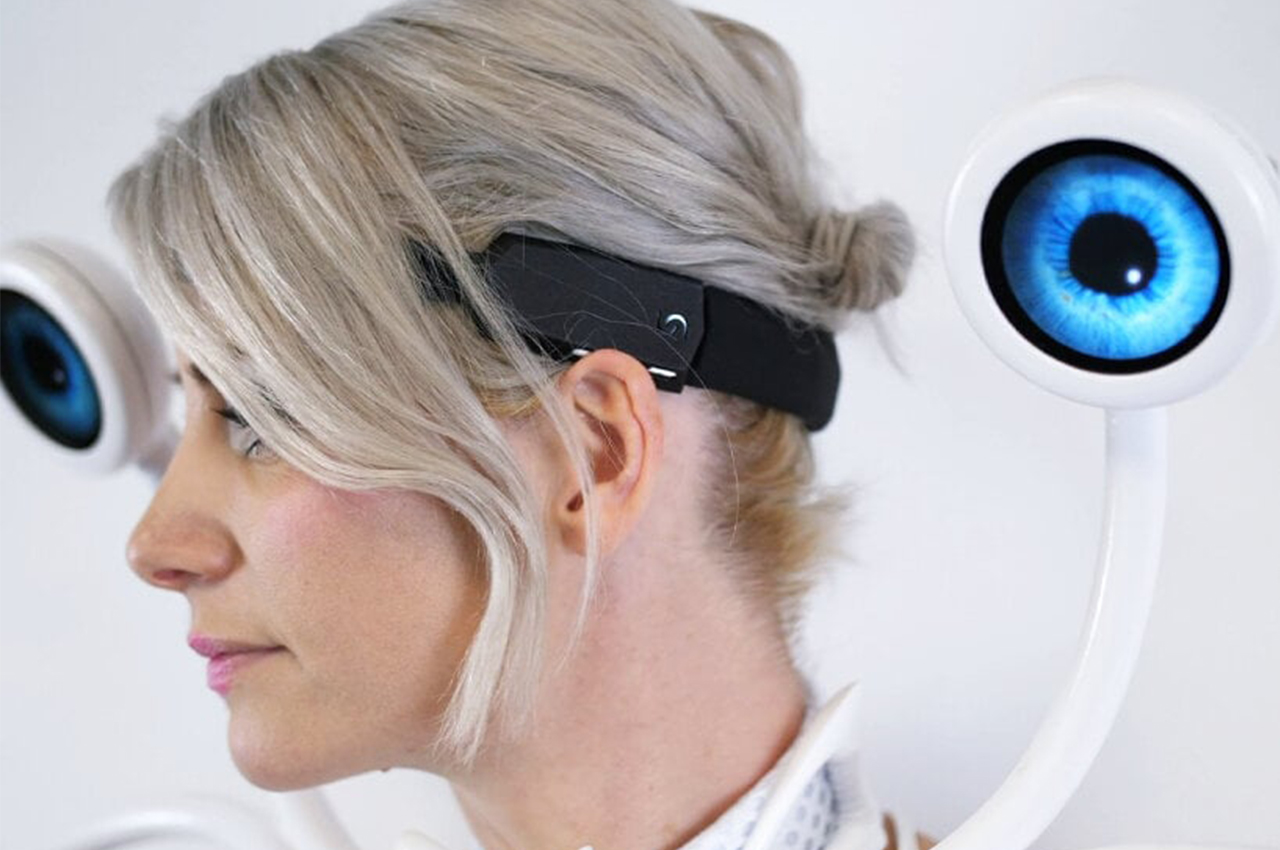
Imagine your partner recognizing your heavy mental workload and choosing to defer a difficult conversation to a more suitable time. Picture your colleagues at work discerning your overload and deciding to wait for a more opportune moment to share their experiences. In a world grappling with a mental health crisis, Wipprecht’s innovation challenges us to rethink how we deal with stress. Rather than hiding it, what if we could express it, allowing the world to adapt to our mental states?
The ScreenDress is poised to address those all-too-familiar moments when we’re drained and someone asks, “Are you okay?” This innovative creation has the potential to act as a preemptive buffer against emotional breakdowns, offering a new way to bridge the gap between our inner worlds and external interactions.
In a society where mental health awareness is more critical than ever, Anouk Wipprecht’s ScreenDress reminds us that fashion is not just about looking good; it can also be a powerful medium for understanding, empathy, and, ultimately, a more harmonious coexistence. The future of fashion may well be one where our clothes speak not just of our style but of our minds.
